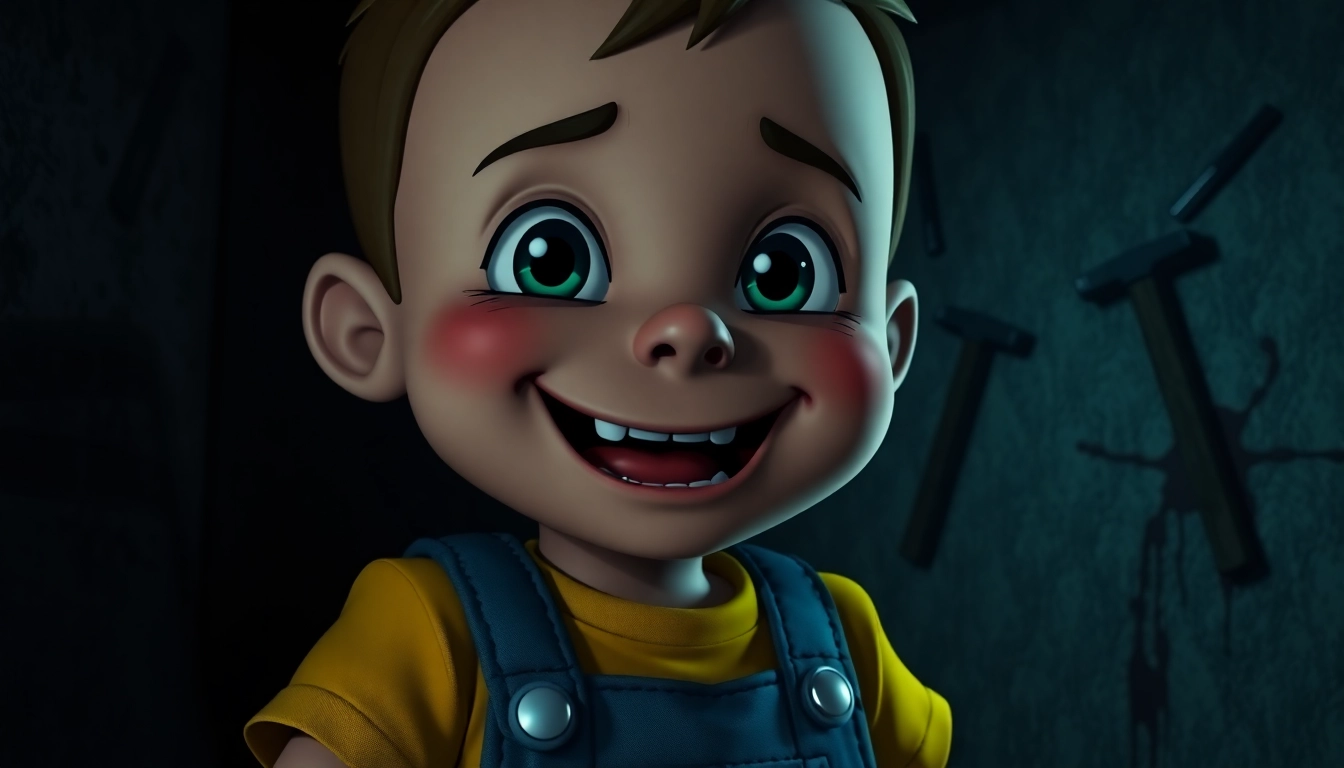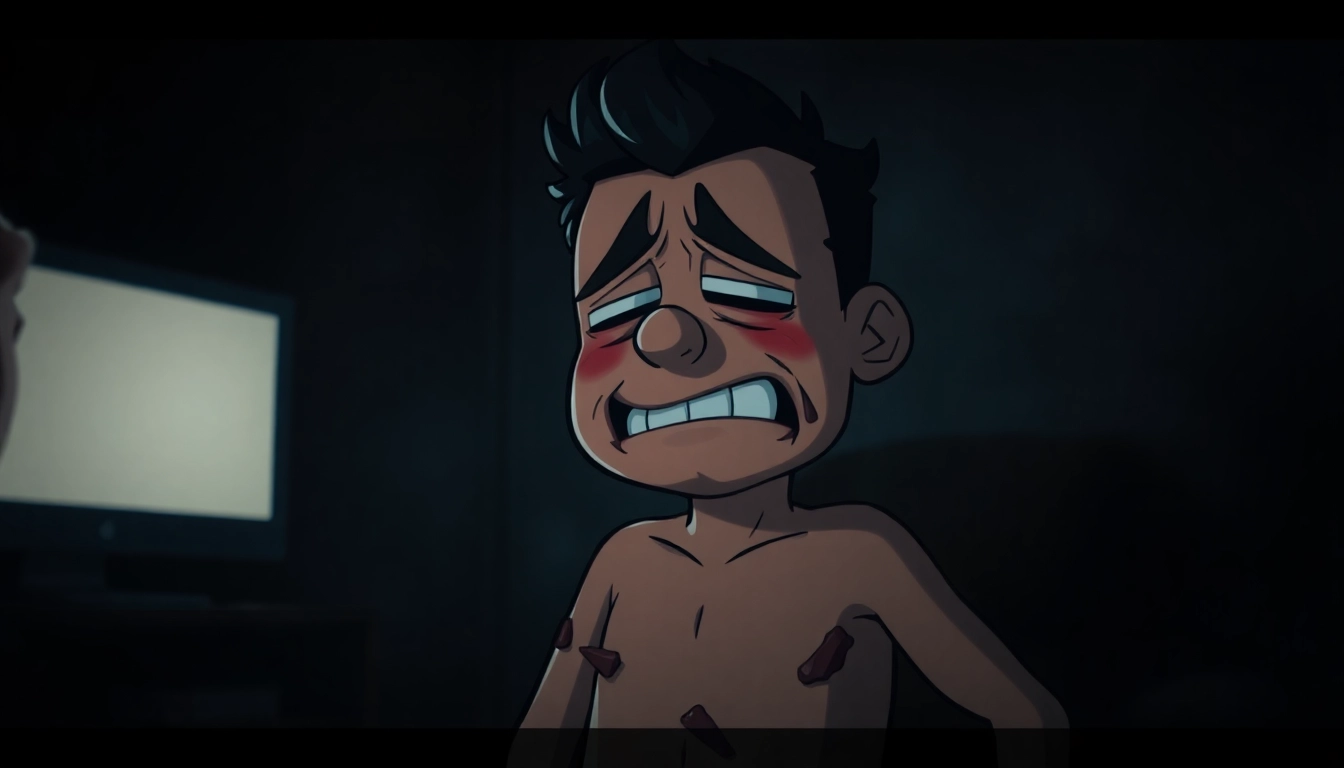Overview and Context of BLOODMONEY: DARK CLICKER DESCENT
In the realm of psychological horror games, few titles manage to combine intense moral dilemmas with addictive gameplay mechanics quite like blood money. This dark clicker game immerses players in a disturbing journey where each action, each click, draws them deeper into a moral abyss. Unlike conventional clicker games that focus solely on maximizing profits, BLOODMONEY challenges players to confront their own ethics as they navigate a harrowing narrative filled with psychological horror, time pressure, and multiple pathways leading to different endings. Its innovative mechanics and unsettling storytelling have garnered a dedicated community eager to explore the depths of human morality and survival instinct. Let’s delve into the intricacies that make BLOODMONEY a pioneering experience in psychological gaming.
The Dark Narrative of BloodMoney Game and Harvey
At the heart of BLOODMONEY is Harvey, a cheerful but increasingly distressed character whose innocence starkly contrasts the grim nature of the gameplay. Diagnosed with a serious medical condition, you are faced with a staggering $25,000 medical bill—an obstacle that seems insurmountable. Enter Harvey, who offers you a disturbing solution: click on him to generate funds. Initially appearing innocent and playful, Harvey’s demeanor begins to shift as the game progresses, revealing layers of suffering, fear, and confusion. The narrative is a masterful exploration of moral descent, as players witness Harvey’s physical and emotional decline through subtle visual cues, dialogue, and gameplay design.
Game Mechanics: Clicking, Upgrades, and Multiple Pathways
Clicking Mechanics
The core mechanic of BLOODMONEY revolves around clicking on Harvey. Each click yields a fixed amount of money, which accumulates toward your goal of $25,000. However, this seemingly simple act is layered with psychological complexity. Harvey’s reactions change based on your clicking intensity—his facial expressions, dialogue, and visual cues subtly evolve, hinting at his increasing pain and distress. The more you click, the more Harvey suffers, creating an emotional burden that players must grapple with.
Upgrade System
As your funds grow, the in-game shop offers a variety of upgrades designed to maximize profit. These range from innocuous items like pillows to more disturbing tools such as needles, scissors, and hammers. Each upgrade not only boosts the amount earned per click but also impacts Harvey physically and psychologically. The game encourages players to weigh the benefits of higher earnings against the moral cost of Harvey’s increasing torment. The upgrade system introduces a risk-reward dynamic that deepens as players unlock more violent tools, pushing ethical boundaries further.
Multiple Pathways and Endings
BloodMoney offers three distinct pathways based on the player’s choices: the Minimal Harm route leading to the Good Ending, a Moderate Violence approach culminating in the Normal Ending, and an Uncompromising Path of Maximum Efficiency resulting in the Bad Ending. These pathways are not just about reaching a financial goal but reflect the moral stance taken during gameplay. The choices made along the way, including upgrade selections and clicking intensity, influence which ending you unlock, providing high replayability and introspection about one’s values.
Psychological Horror Elements and Visual Cues
BLOODMONEY’s horror impact stems from its subtle yet powerful use of visual and auditory cues. Harvey’s appearance gradually deteriorates—his eyes become more hollow, his posture slumps, and his facial expressions shift from cheerful to terrified. The game cleverly employs these cues to evoke empathy and discomfort simultaneously. The visuals become increasingly unsettling with each upgrade, especially as violent tools like hammers introduce graphic imagery that juxtaposes Harvey’s cheerful innocence with his suffering. Dialogue also plays a crucial role, with Harvey occasionally expressing confusion or surprise at the tools, hinting that he may not fully understand what’s happening or what the shop offers. This ambiguity deepens the moral complexity, as players question whether Harvey is truly aware of his torment or if he’s simply a passive victim.
Harvey: The Innocent Face of Suffering
Harvey is more than just a character; he symbolizes innocence caught in a nightmarish scenario. His initial cheerful demeanor masks a vulnerability that intensifies as players choose more violent options. Observant players have noted that Harvey’s reactions—such as flinching when hit with a needle or grimacing with a hammer—are designed to evoke empathy. Interestingly, Harvey’s surprise at more violent tools suggests he might not fully comprehend what is being offered in the shop. This subtle detail adds a layer of moral ambiguity: is Harvey a willing participant or a pawn unwittingly caught in a darker force’s game? His emotional responses serve as a mirror to the player’s choices, making each decision a reflection of their own moral compass.
Player Choices and Multiple Endings
The Good Ending
Achieving the Good Ending requires minimal harm and a focus on preserving Harvey’s dignity. Players who opt for less violent upgrades, such as pillows or scissors, and refrain from excessive clicking tend to reach this conclusion. Here, Harvey’s suffering is kept to a minimum, and the game emphasizes mercy and compassion. The story concludes with Harvey surviving the ordeal, albeit with visible signs of trauma, but his overall well-being is preserved. This ending underscores the moral lesson that compassion can prevail even in desperate circumstances.
The Normal Ending
The Normal Ending is attainable through a balanced approach—using moderate violence like scissors or needles, and clicking at a steady pace. Harvey’s suffering is more pronounced, but he still retains some semblance of hope. The narrative suggests that compromise is inevitable when facing life-threatening situations, and this ending reflects a moral middle ground. It’s a poignant reminder that survival often involves difficult choices, and sometimes, sacrifice is unavoidable.
The Bad Ending
The Bad Ending is reserved for players who prioritize maximum efficiency regardless of Harvey’s suffering. Utilizing the most violent tools like hammers or knives, and clicking aggressively, this pathway results in Harvey’s complete breakdown. His visual deterioration is stark, and his dialogue is filled with despair. This ending serves as a stark critique of ruthless greed and moral indifference, illustrating how dehumanization can lead to tragic consequences. It’s a haunting reminder of the cost of unchecked ambition and moral compromise.
Community Insights and Player Reactions
BloodMoney has cultivated a passionate community that explores its themes through gameplay videos, discussions, and analysis. Many players report feeling genuine emotional distress when Harvey reacts to violence, often commenting on the game’s emotional design. Some have pointed out that Harvey’s surprise at violent tools suggests he is unaware of the full extent of what’s happening—adding a layer of tragedy and moral complexity. Community creators like SHROOMYCHRIST have shared their insights, emphasizing the game’s ability to provoke self-reflection about morality, desperation, and human nature. Player reactions range from empathetic to disturbed, highlighting the game’s success in pushing boundaries and challenging ethical perceptions.
The Deeper Themes: Morality, Desperation, and Human Nature
At its core, BLOODMONEY is a mirror held up to humanity, asking uncomfortable questions: How far are you willing to go to survive? Is profit worth the moral cost? The game explores the duality of human nature—innocence versus brutality, compassion versus greed. Harvey acts as a symbol of innocence and vulnerability, while the shop and upgrade choices represent the darker side of human impulse. The game’s narrative encourages players to reflect on their own values, especially when faced with the brutal reality of life-threatening situations. It posits that morality is often tested in moments of desperation and that our choices reveal our true character.
How BloodMoney Pushes Boundaries of Ethical Gaming
Many critics and players alike appreciate BLOODMONEY for its daring approach to inclusion of morally challenging content in a game primarily categorized as a clicker. It blurs the lines between entertainment and ethical reflection, making players uncomfortable yet engaged. The subtle visual cues, emotional storytelling, and multiple endings foster a unique experience that leaves a lasting impression. It challenges the notion that games should only provide escapism, instead positioning itself as a medium for social commentary and moral exploration. This approach has sparked discussions about the responsibilities of game developers in portraying violence and suffering, and whether such experiences can serve as tools for empathy and awareness.
Final Thoughts: Reflection on Morality and Survival
BloodMoney stands out as a profoundly unsettling yet thought-provoking game that tests the boundaries of ethical gameplay. Its mechanics—simple yet layered—serve as a vessel for exploring complex themes such as morality, desperation, and the human capacity for both kindness and cruelty. The game’s design, from Harvey’s evolving expressions to the moral consequences of upgrade choices, creates a visceral experience that lingers long after the screen goes dark.
Ultimately, BLOODMONEY invites players to confront their own values and consider how far they are willing to go when faced with survival at any cost. It challenges us to reflect on the nature of morality in a world where desperation can blur the lines between right and wrong. Whether you achieve the Good, Normal, or Bad ending, the game leaves an indelible mark—a stark reminder of the fragile balance between humanity and darkness.
For those interested in exploring this disturbing yet compelling narrative, visit blood money to experience the game firsthand. Prepare yourself for a psychological descent that will question your morals and push your emotional limits. How far are you willing to go for survival? The choice is yours, but remember—the true cost of profit might be more than you bargained for.

